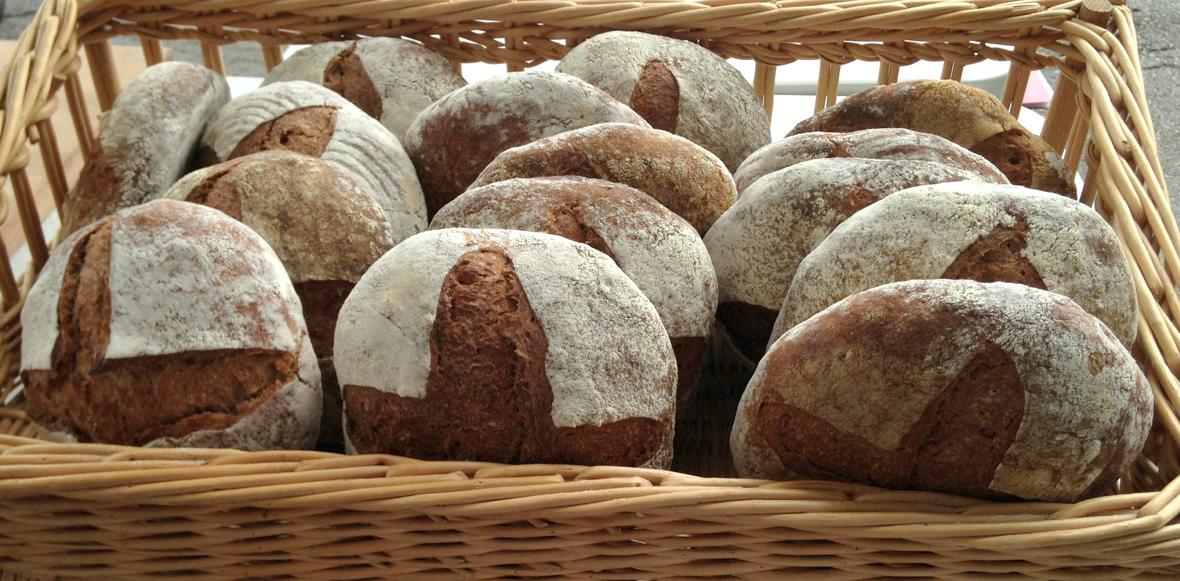Each year, Oldways uses its unique position as a leader in nutrition communication to forecast the next wave of what’s hot in the food industry. Below, we share I’ve food trends to keep an eye on in 2017. It looks like we are in store for another delicious year of creative flavors and culinary innovations, especially in the rapidly growing health food sector.
1. Vegetables Take Over Dessert
Vegetables were only recently promoted from the edge of the plate to its center, and 2017 holds even more promise: veggies are taking dessert menus by storm! We all grew up having to eat our vegetables if we wanted dessert, but now you can enjoy vegetables for dessert. And we’re talking about creations far beyond yesteryear’s carrot cake or pumpkin pie.
In the coming year, we predict seeing many creative uses of vegetables to satisfy sweet teeth. Some options already appearing on menus include Caramelized Endive Clafoutis Tarte or Sweet Asparagus Beignets (crispy asparagus-laced pastries topped with green asparagus ice cream) at Belga Café in DC; Sweet Potato Alaska at Paley’s Place in Portland, OR; or Butternut Squash Crème Brulée at Nomad Hotel in NYC.
If this new wave of vegetable desserts hasn’t come your way yet, remember that a tried-and-true carrot cupcake turns out to be a good source of Vitamin A and is packed with healthy nuts all benefits you won’t get in a plain vanilla cupcake.
2. Processed Food Done Right
2017 will see a big surge in the good kinds of processed foods. Processed foods are often criticized as diabolical modern creations that undermine health a claim that’s true of a number of foodlike substances in our supermarkets. Now, however, we’re starting to understand that how we process food matters.
Whereas traditional processing such as turning milk into cheese; fermenting vegetables into kimchi; leavening bread with sourdough cultures; turning long-cooking wheatberries into fast-food bulgur adds convenience, flavor, and nutrition to food, modern processing most often decreases the nutrients in food. Companies are turning back to the old ways of processing as they seek cleaner ingredient lists. Making bread with a slow sourdough ferment, for instance, can deepen the flavor of bread and give it a longer shelf life without chemical preservatives.
Growing interest in the health of our gut microbiome is driving this trend forward, too. Most traditional processing depends on encouraging the proliferation of good bacteria to drive out the bad bacteria that cause food to spoil and become unsafe to eat. Traditional cheeses, yogurts, pickles, and breads may add to the diversity of good bacteria in our guts, a diversity that’s increasingly being found to be connected with better health.
3. Sugar is Public Enemy #1
Sugar is probably not going to have a good 2017, especially because Philadelphia, San Francisco, Oakland, Boulder, and Chicago/Cook County voted in 2016 to implement soda taxes. These cities join Berkeley, CA, where a soda tax has raised more than $2 million and cut soda consumption by 21 percent in some neighborhoods, all since being implemented in 2015.
In years past, the beverage industry had beaten back similar taxes in around 30 communities. But momentum for soda taxes is steadily building in ever more communities, and added sugars are slated to be added to the Nutrition Facts Panel on packaged foods in 2018. 2017 could be the year when Americans who eat on average 17.5 teaspoons of added sugars a day start to say enough’s enough.
We’re already noticing more savory dishes in areas that had previously skewed sweet such as steel-cut oatmeal bowls in flavors like Madras Curry or Jambalaya. Be sure to watch how chefs and manufacturers get creative with herbs and spices as they cut back on sugar.
4. American Cuisine Has a Melt-Down
America’s 400-year history as a nation of immigrants will be ever more apparent on plates in 2017. While we’ve long enjoyed ethnic foods in their own restaurants, the trend now has gone beyond fusion to a new level of melting-pot flavor, with foods like Thai or Indian burritos and ramen burgers. Even the term fusion is yesterday, with the terms mashup and smashing gaining traction for describing what happens when two very disparate food cultures become one.
We consider this stage three of America’s appreciation of ethnic cuisines. Stage one was characterized by dumbed down versions of original dishes, such as Chinese food no one in China would ever recognize. Stage two focused on authenticity, making dishes just as they would have been made in their country of origin. Stage three mixes authentic tastes from two cuisines such as kimchi with harissa in a way that can succeed only when both chefs and diners have a sophisticated knowledge of a variety of cuisines.
5. Grains Go Local
For years, buy local has referred mainly to vegetables, fruits, and meats. We’re excited that locally grown grains are joining the party in 2017, coming to a farmer’s market or bakery near you. Just as we’ve come to differentiate between the bounty of heirloom tomato and apple varieties, we’ll be learning that grains come in different varieties with different flavors, too.
Dr. Stephen Jones, at the University of Washington’s Bread Lab, even talks about wheat having terroir a distinct flavor that’s tied to the soil it’s grown in. He’s exploring purple wheat, blue wheat, and making it his mission to pair the proper product with the proper wheat. For example, flour that makes a great tortilla might not be at all right for a dinner roll. Oh the possibilities!
Small regional grist mills are serving as hubs for local grain economies, helping farmers mill and market special grains suited to the climate in their region. We’ll be hearing more from local grains advocates like the Maine Grains Alliance in Skowhegan, ME and Community Grains in Oakland, CA. Local grains make for strong and sustainable food economies in every region of the country, so learn which grains are now being grown near you and make a point to taste the difference next year.
Cynthia Harriman, Oldways director of food and nutrition strategies











Leave a comment